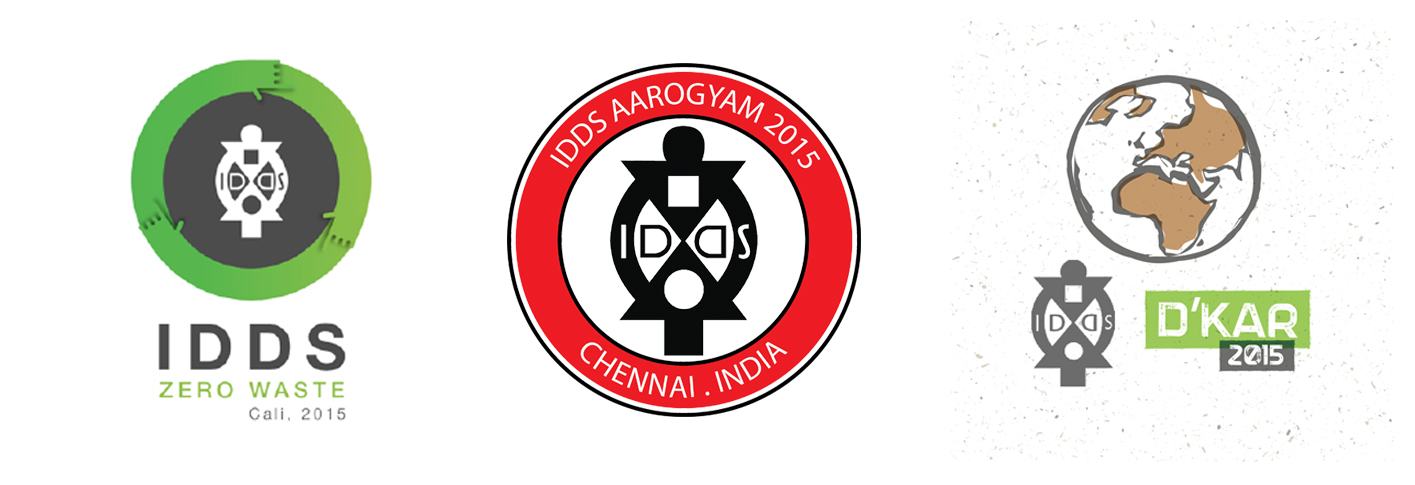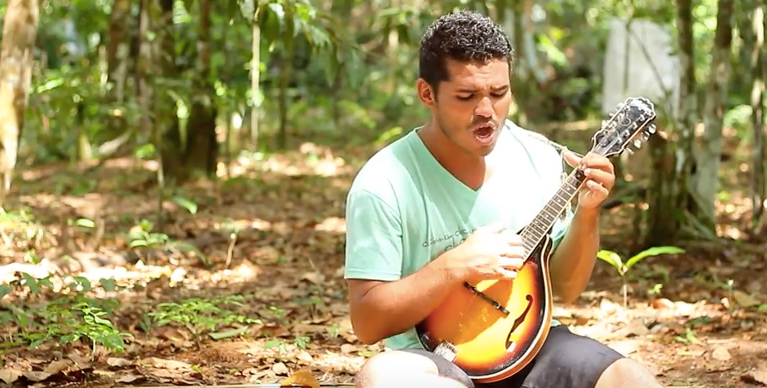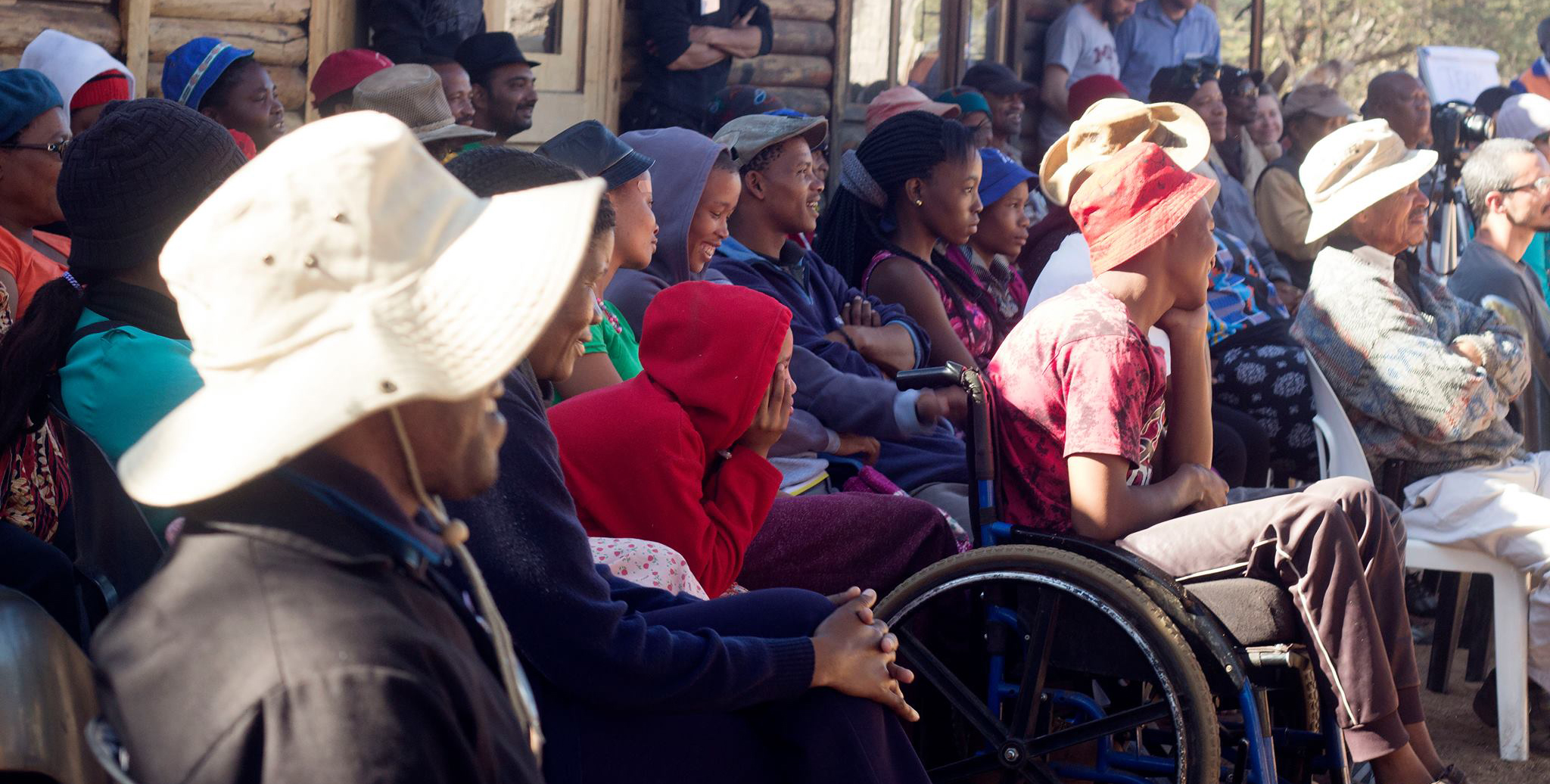IDDS on Three Continents: A Conversation with This Year’s Summit Organizers

It’s hard to believe it, but we’re just six weeks out from the first International Development Design Summit of the year!
This month, I sat down with the three lead organizers for this summer’s International Development Design Summits to learn more about what makes each summit unique, how they chose participants, and what each team’s vision for success looks like.
Below, you’ll hear from Thabiso Blak Mashaba, lead organizer for IDDS D’Kar in Dekar, Botswana; Pedro Reynolds-Cuéllar, lead organizer for IDDS Zero Waste in Cali, Colombia; and Habib Anwar, lead organizer for IDDS Aarogyam in Chennai, India.
This is the first year we’re supporting summits on three continents! Tell me about yours and what makes it special.
Thabiso (Botswana): IDDS D’Kar is unique in the sense that we’ll be hosting it in a marginalized community here in Botswana—with the San people in the desert. This community is isolated and often doesn’t benefit from government support schemes as they should.
The San people are artists by nature. They are emotional beings, rather than physical beings. They excel in arts, crafts, and music, but they haven’t been able to sustain themselves (financially) through that. We are hoping that we can introduce them to the design cycle and business practice through the IDIN Network.
Pedro (Colombia): IDDS Zero Waste is a themed summit around the topic of zero waste. It’s an event that we organized in partnership with the municipality of Cali, a city in the southwestern region of Colombia.
It’s a summit that is going to explore solutions around three main avenues: first, how to create inclusive businesses that allow waste pickers to be part of solid waste management in Cali; second, how can we work along with groups of recyclers in co-designing technologies to address waste challenges; and third, how can we enhance or build the platform for a conversation between groups of recyclers, manufacturers, government, and citizens.
There are many things that make our summit unique, especially the possibility to inform policy and have the opportunity to work hand-in-hand with governments. It provides a platform for worlds that do not usually meet to do meaningful work together.
Habib (India): What makes IDDS Aarogyam unique is its theme—health—and the fact that IDDS is being held in Asia for the first time ever. All of that along with the fact that India has such a rich and interesting culture.
This is also the first time that a summit is being held in an area where IDIN is already helping set up a regional innovation space through its grant to the HIVE Innospace, a local maker space.
I have been associated with health work for about ten years now for various reasons, the primary reason being ayzh, a maternal health-focused social enterprise that I co-founded with my wife Zubaida Bai. Both Zubaida and I have been IDIN members from the first year IDDS was launched.
We thought that there was a wide opportunity for products and innovations that are health-related throughout India. We knew that design can be a game-changer in the health sector, so to us it was a logical fit to host a health-themed IDDS.
______________________________________________________________
One of the questions we often hear is, “How do you choose participants?” Can you tell us a bit about how you chose from the excellent applicant pool?
Thabiso: I’m a firm believer of continuity. That was key for us in the applicants. We can tell who might be more likely to take projects forward after the summit. That’s what we’re looking for first and foremost after the interest in desert communities. We also looked for strong female candidates. Normally, engineering is associated with men. We are trying to reel more women into the engineering side of things.
Another key thing we looked for was if an applicant had a past project that they had done before. If so, that means they have the potential to work well on teams, and take a project forward despite limited resources. It’s really about passion. Based on the IDIN philosophy, having people from across the world to keep the IDDS spirit of working with people from all walks of life.
Pedro: (Choosing participants) was the most difficult stage of the planning. Looking at hundreds of applications, all of them amazing, and trying to choose who you think is the best based on your limited knowledge about this person is really difficult.
We tried to get a very diverse group, both culturally, but also in terms of the experience they bring. One of the things that makes our summit special is that it’s not just about building technologies, but also about building the system around those technologies, and building a system that is inclusive of waste pickers as entrepreneurs. Many of our participants are from the business world, engineering, systems design, grassroots businesses, and waste picker organizations all over the world.
About 35-40 percent of the people that were chosen were waste pickers themselves, and not just from Colombia, but also from Nicaragua, Kenya, and India. They come with great entrepreneurship and activism experience. They’re very savvy in terms of local technology and how to build a locally inclusive waste management system.
Habib: There are a number of things that we looked at. Do they have the IDDS spirit? That is the first thing we look for. IDDS spirit is not just passion, not just commitment. It’s the can-do attitude and the making-things-happen attitude that sets our participants apart. The ability to be able to leave your comfort zone and walk in dire or difficult situations because your motive is to make a difference to the community you are working with to create a product or pilot or prototype that has all the markings of being able to address the challenge that you’re trying to address.
The next-most important question is “Are they interested in continuity, or is it just an activity for their CV? Are they really trying to make a difference for the greater global good?”
In keeping with IDDS spirit, we also tried to achieve true diversity in our participant mix—people from different geographies, walks of life, and different sectors—that same diversity that IDDS and IDIN have come to be known for.
______________________________________________________________
A crucial part of any successful IDDS is the partners behind it. Can you tell me a bit more about your partners and the summit venue?
Thabiso: We are partnering with the Kuru Family of Organizations, which is an eight-part organization that represents the San people and issues across the board including health and livelihoods. They are excited about the hands-on nature of IDDS, and how it might be able to drive change in communities involved in the summit as well as after through IDIN Network.
IDDS D’Kar will be held at the Kuru Cultural Center at the heart of D’Kar. It’s the heart of the community. It has classrooms and office spaces. Once you are in D’Kar, it’s actually the central place. Close to the shop, the clinic, government, and the church.
We are also partnering with the Botswana Innovation Hub (an accelerator that supports local enterprises like These Hands), the Southern African Innovation Support Program (SAIS), and the University of Botswana Industrial Design Department (who are the local curriculum experts), and the San Research Institute.
Pedro: When we started talking about the possibility of the summit, (former D-Lab Instructor) Libby McDonald and one of Libby’s colleagues had an opportunity to converse with the mayor of Cali as well as with a couple of stakeholders that were involved in rethinking the waste management system in Cali.
When they came back, they were very excited by how open the municipality, represented by DAGMA (Administrative Department for Environmental Management), and the government were in engaging this process. We identified this as a good opportunity to start building a partnership and advancing work together.
We also are partnering with Universidad del Valle, a large public university in Cali, the capital city. We got Universidad Nacional de Colombia to be involved through (IDIN Network member and IDDS organizer) Fabio Fajardo, who is an instructor there.
Universidad del Valle founded a course in sustainable design and arts at the university. Their idea was to use the class to give students and faculty an opportunity to take project forward after the summit. Some of the projects will be adopted or captured by the class. They will open the class to waste pickers to come to the class and work on these projects and other projects. No project will become orphaned after the summit.
Habib: The key organizer is HIVE Innospace, an innovation hub that was recently established in Chennai with support from the IDIN Network.
ayzh, a social enterprise dedicated to maternal health, is also a key partner, giving employee and volunteer time to organizing the summit.
We are also partnering with B.S.Abdur Rahman University in Chennai, a prestigious university who wants to work hand-in-hand with HIVE Innospace and wants to make sure that this journey we are taking continues not only during the summit, but also after, year after year.
The summit itself will be held at the university, which will allow us access to living space and classrooms. It also makes it easy for us to incorporate visiting speakers and guest lecturers from the university.
______________________________________________________________
Tell me a little bit about yourself and how you got involved in organizing IDDS.
Thabiso: I grew up with development issues being central in the household. I really wanted to make an impact on people’s lives.
I got into advocacy for the arts and started meeting all kinds of different people. I grew deeper in understanding the creative economy. Then I started a masters degree in development practice where one of my lecturers informed us about IDDS in Zambia. I felt that the way in which international development is being designed is the reason we’re not seeing diversification in the economy, so I was excited about the potential of IDDS to change that.
At IDDS Zambia, I actually got to learn hands-on development practice, and was really inspired. What I really appreciated was the act of sitting down and problem framing with communities regardless of their background and expertise. Sharing all ideas equally. It opened up my mind. Based on that experience, I founded my social venture, These Hands.
I decided to apply to host a summit in 2015 with the big picture in mind. We wanted to host a two-week IDDS in 2015 in order to build capacity to host a full-length, classic summit in 2016 to create real, long-lasting products and business models in Botswana.
Pedro: I’m a linguist and language philosopher. I studied at Universidad Nacional de Colombia. I worked a number of years as a designer in the education field and private sector. Then I turned to the nonprofit sector to work for One Laptop per Child. While there, I started working with a professor at the MIT Media Lab and did a fellowship there. While I was there, I met someone at D-Lab. I fell in love with D-Lab’s approach. Given my experience in the education space, they invited me to help run the D-Lab Education class.
I got involved in the summit through one of the former organizers—Libby McDonald. She was, for a number of years, the instructor for the D-Lab Waste class. I knew her through the D-Lab network. We ran several projects together. She invited me to co-teach the class with her, and she told me she was thinking about putting an application in around the topic of waste in Colombia.
When Libby asked me to be part of the organizing team, and advancing the summit, I thought it was a neat opportunity to give something back to Colombia and to be more active in my pursuit of learning how to integrate and make businesses that are more inclusive.
Habib: I have been associated with each IDDS from 2007 until 2012, sometimes as a participant and other times as an organizer. I’m also married to IDIN Network member Zubaida Bai, who has been very involved in IDDS in the past. Zubaida and I grew up around the IDDS folks.
I’ve always wanted to do this, to take IDDS to India, but it was never the right timing. This year, with setting up HIVE things started to fall in place and I took charge to make it happen no matter what.
I’m a technocrat. I started out working as a computer science engineer at a consulting business, and computing for a while, and then was offered a position to provide support Dell when they were starting their computer helplines in India.
When I grew up, I knew I wanted to make a difference. There were times I didn’t find myself making a difference in the way I wanted to. I think I’ve found what was missing, and been fairly successful in changing it and achieving those goals. IDDS is a part of that.
______________________________________________________________
What kind of challenges have you faced in planning the summit? And how are you working to overcome those challenges?
Thabiso: One challenge that we had was lack of responsiveness of local investors. They are very focused on social innovations, especially within city centers and ICT, so incubating into their minds that grassroots innovations can have a big impact on Botswana took months.
Virtual communication is another major challenge because our organizers are all over the world.
And the heat is a challenge. It’ll be summertime down here in Botswana. Bring your sunscreen and a hat!
Pedro: Availability and connectivity is a challenge for us. Planning meetings is tough. We have one organizer who is several hours behind, so it’s hard to make sure everyone always feel a part of the conversation. Time zones are challenging for putting people together. Internet access can also be a challenge in being a part of the meetings.
Another challenge is that the preparation of the summit starts very, very early in the process. Because of this long process, some of the organizers were offered other opportunities that took them elsewhere. You have to know with a long process that you might lose some people off the bus. You have to have a strategy to deal with those losses.
Habib: IDDS Aarogyam got a later start than the other summits, but I’m glad that we got a rock star team which help make up for a lot of lost time. They have gone beyond the call of duty to make things happen.
______________________________________________________________
Imagine for a minute that the summit is over. What does success at IDDS look like to you? What are you aiming for?
Thabiso: I would love to see is everyone smiling. That’s the first one. But also coming up with the prototypes we have set ourselves to build. And people being enthusiastic to move the projects to the next level, to scale them to ventures or products.
We also want to show this real value we have been telling donors and partners about in practice. We want to show that we managed to produce a particular technology, that now sustaining the people of D’Kar.
And with the 2015 summit, we look forward to it being the real build up to the summit in 2016. The vision started with 2016 in mind, as Botswana is turning 50 years of independence. The country has been trying to diversify the economy away from factor or mineral dependency. They haven’t succeeded. I’m hoping our success in 2015 can start a new culture and see a real investment in the cultural and creative industries as the new economic drivers towards 2016 and beyond.
Pedro: Everyone comes with different dreams at the summit. Success for me will be being able to see some of the waste pickers empowered about their capabilities to address challenges, which is one of the core pieces, the heart of the summit. I’m also really hoping that this event will be the opportunity to create a bigger conversation in Cali, in Colombia, and wherever else we can take it, on how to give recognition, dignity, and tools for these groups to be recognized for the important work that they do in a very human way.
I think the entire group, not just organizers, but also participants, are looking forward to make an impact on the policy that is a motivating the summit actually happening. If we see a change at a centralized level, and that has an impact on the groups that we’re working with, we can call this a success too.
Habib: Have reached the last day itself would be success for me, but real success for me would be to see at least half of the projects going forward. I hope HIVE InnoSpace can take (the projects) to a place where (IDIN Network member) Stephen Gerrard has taken JustMilk or Zubaida and I have taken ayzh to.
Another thing for real success would be to see at least 50 percent of the participants and organizers supporting community-driven projects.
A final wish I have for at least this group, if not the entire IDDS crowd, is it becomes an engaging community for life, not just for a few years.






